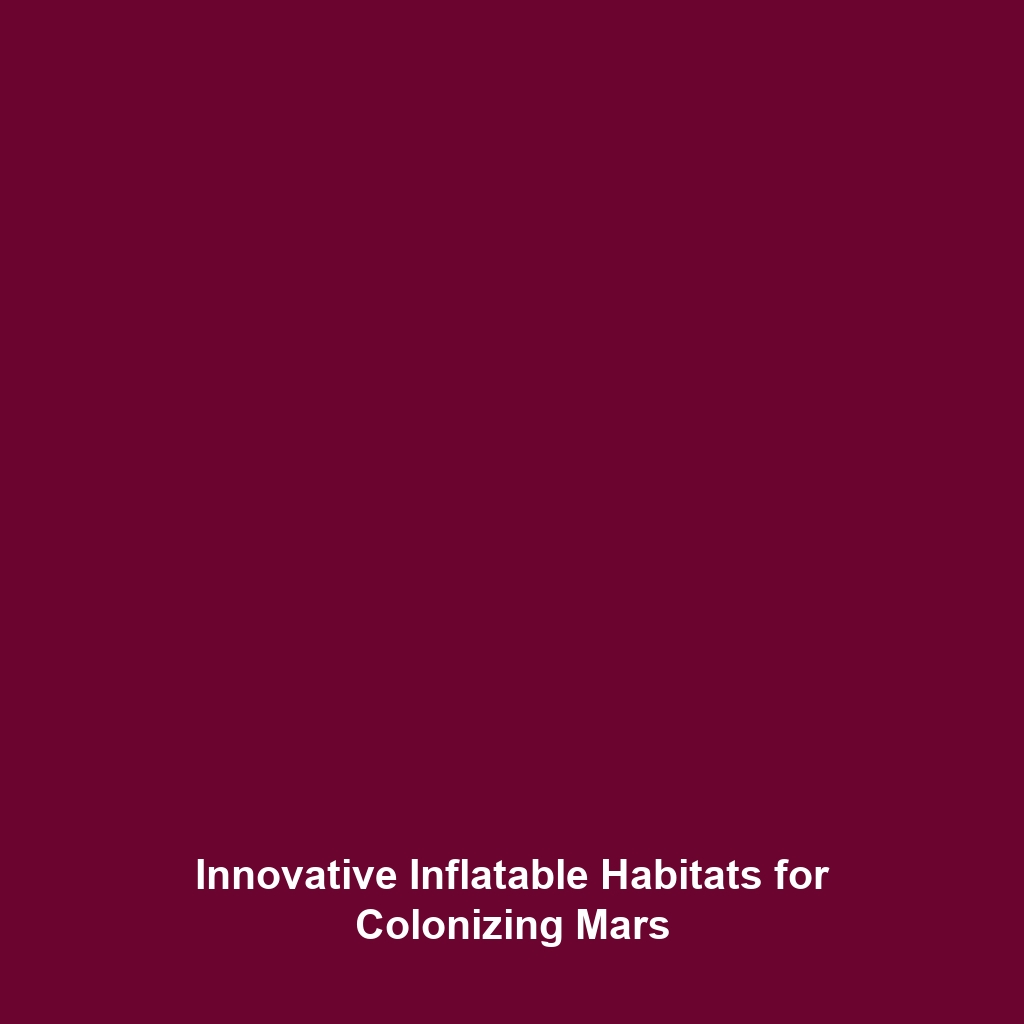Inflatable Habitats: Concepts and Designs for Lightweight, Expandable Living Spaces
Introduction: As humanity approaches the possibility of colonizing Mars, the need for innovative living solutions becomes increasingly critical. Inflatable habitats, noted for their lightweight and expandable nature, offer a promising avenue for establishing sustainable living conditions on the Red Planet. These structures can provide the necessary shelter against harsh Martian environments, making them a focal point in the discourse surrounding extraterrestrial habitation. In this article, we delve into the concepts and designs of inflatable habitats, highlighting their significance in the broader context of colonizing Mars.
Key Concepts
The foundation of inflatable habitats lies in several key concepts critical to their design and functionality. These principles contribute to the feasibility of using such habitats for colonizing Mars:
- Lightweight Materials: The choice of materials plays a crucial role in minimizing weight while maximizing durability and insulation.
- Expandable Designs: Inflatable habitats can be transported compactly, allowing for easy deployment and expansion upon arrival on Mars.
- Self-Sustainability: Integrating systems for water recycling, air filtration, and energy generation are vital for long-term habitation.
Applications and Real-World Uses
Inflatable habitats have garnered attention beyond theoretical designs and are being actively tested and developed for practical applications, particularly as they relate to colonizing Mars. Notable examples include:
- NASA’s IRVE (Inflatable Reentry Vehicle Experiment): This project explores the use of inflatable technology for re-entry into the Martian atmosphere and potential habitat deployment on the surface.
- Bigelow Aerospace’s BEAM (Bigelow Expandable Activity Module): This prototype is currently attached to the International Space Station (ISS) and demonstrates the viability of expandable habitats in space.
Current Challenges
Despite their potential, inflatable habitats face several challenges that must be addressed to ensure their effectiveness in colonizing Mars:
- Structural Integrity: Maintaining durability against Martian dust storms and temperature fluctuations is a significant concern.
- Radiation Protection: Adequate shielding from cosmic radiation and solar particles is necessary for long-term habitation.
- Logistical Issues: The transportation and deployment of inflatable habitats pose logistical challenges that need to be resolved.
Future Research and Innovations
The future of inflatable habitats for colonizing Mars is promising, with ongoing research and breakthroughs in materials and technologies. Key areas of innovation include:
- Advanced Materials: Research into new composite materials that offer enhanced insulation and protection against harsh environments is underway.
- Smart Habitats: Innovations for integrating IoT technology into habitats for monitoring and optimizing living conditions are being explored.
- 3D Printing Techniques: Future habitats may employ 3D printing methods using Martian regolith to enhance sustainability and reduce the need for transportation from Earth.
Conclusion
Inflatable habitats represent a pivotal advancement in the quest for colonizing Mars, offering lightweight, expandable living spaces that could significantly enhance our ability to establish a sustainable human presence on the Red Planet. As research progresses, addressing current challenges and harnessing innovative technologies will be crucial to realizing this vision. For additional insights into space exploration and habitat strategies, consider exploring future technologies in space habitation and current missions to Mars.

Leave a Reply